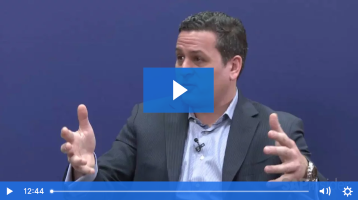Bring Agility into the Finance Department
How Agile Finance Can Help Increase Efficiency and Flexibility to Enable True Business Partnering
Traditional methods of running your planning, budgeting, and forecasting processes, which rely heavily on manual effort and spreadsheet-based activities, are outdated. Higher demands and shorter cycles dictated by external market factors, the continuous pursuit of improved efficiency, and pressure to reduce costs are forcing chief financial officers to seek ways to transform their processes and operations.
The key to this transformation is agility. Organizations need more agile financial processes to enable the business to grow. They need rolling budgets and forecasts that better predict and react to evolving market conditions, continuous forecasting and real-time ad hoc reporting, and process benchmarking that enables action based on that information.
To adopt such innovative financial strategies, organizations must embrace an “Agile Finance” approach that is unencumbered by common challenges inherent in traditional systems, data integrity, and integration scenarios. Reengineering finance processes supported by new technology and redefining the finance strategy frees up the wealth of skill and knowledge needed to enable true business partnering and deep analytics.
Explore related questions
The Building Blocks of Agile Finance
Undertaking an Agile Finance approach involves using a set of related and integrated applications. These applications should comprise three main functions:
- Finance performance management: The “heavy lifting” component of Agile Finance, these applications provide native, real-time integration with source data systems. Application bundles such as SAP Integrated Business Planning combine demand-side and sales planning with traditional financial budgeting and forecasting to form the core of finance performance management.
- Data-driven processes: Agile Finance gives you access to the data and information you want when you want it. It requires an environment that can store, manage, and process large data volumes regardless of the source, format, or type. In-memory technology such as SAP HANA unlocks the power of finance by providing seamless integration and unparalleled processing speed.
- Analytics: Modern analytics applications provide tools that combine financial information with operational information to create a largely user-driven graphical environment for analysis and reporting. Supported by in-memory technology and vast amounts of data, predictive analytics is no longer just a tool for actuaries and should be leveraged in everyday planning.
Simply implementing new technology on top of existing processes will yield only a few benefits. Instead, Agile Finance presents the opportunity to completely reengineer traditional finance processes. For example, the technology to implement rolling forecasting has been available for many years. The business process change required to forego the traditional annual budget and accept rolling forecasting as a means to measure performance is much harder. An Agile Finance approach is not an “out-of-the-box” solution; it is a journey that finance must begin, evolve with, and take the entire organization with them. New deployment options, such as cloud, enable a more flexible alternative to traditional license procurement, making a phased implementation approach much easier.
Simply implementing new technology on top of existing processes will yield only a few benefits; Agile Finance presents the opportunity to completely reengineer traditional finance processes.
Unleashing Opportunities
With Agile Finance, organizations can achieve significant and tangible efficiencies and leverage data and analytics to drive their business into the future. Adopting Agile Finance supports simpler data management by making financial process statuses fully traceable and visible, leading to fewer controls and more real-time information. This real-time information leads to more timely and actionable financial information that allows managers to avoid problems and recognize opportunities thereby transforming the business. To learn more about the opportunities Agile Finance can provide your organization, visit https://www.ey.com/gl/en/issues/managing-finance/cfo_overview.









